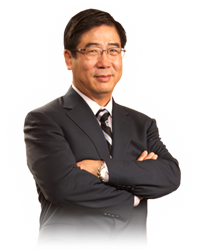
Dr. Kaixuan Liu
When it comes to battling chronic back pain and the spinal disorders that cause it, lasers are not surgeons’ most common – or effective — tool.
WEST ORANGE, N.J. (PRWEB)
January 28, 2020
For Luke Skywalker, a laser sword proved the weapon-of-choice in his fight against the “Empire” in Star Wars, but, when it comes to battling chronic back pain and the spinal disorders that cause it, lasers are not surgeons’ most common – or effective — tool, according to world-renowned spinal surgeon Kaixuan Liu MD, PhD.
“As far as laser spine surgery being some kind of magical procedure that brings instant pain relief, there is no such thing, despite the ballyhoo on the Internet suggesting it’s a minimally-invasive – or even nonsurgical – approach for treating herniated and ruptured spinal discs or spinal stenosis,” says Dr. Liu. He is internationally recognized for his expertise in performing endoscopic spine surgery and serves as medical director of the Atlantic Spine Center, based in New York and New Jersey.
Unlike described “laser surgery,” endoscopic surgery is a proven, minimally invasive procedure that allows the surgeon to work on the spine through a small tubular system or through micro-incisions (incisions about the size of a quarter), with the aid of an inserted endoscopic camera. The camera provides full visualization of the surgical field.
“Endoscopic procedures have revolutionized treatment of neck and back pain. Clinical experience and study show they minimize blood loss, speed recovery, involve less pain, provide long-term relief and improve a patient’s overall quality of life,” says Dr. Liu.
“Because of the magnification that the endoscope provides, an experienced surgeon can use a laser safely during endoscopic surgery to remove scar tissue, adhesions and small, boney growths or to coagulate areas of bleeding.”
“But the laser’s application is confined to cases in which the cause of the patient’s pain is clearly diagnosed and localized. It is not at all useful for repairing and removing major disc herniations (disc ablation), eliminating large bone spurs or stabilizing the spine,” he adds.
Other experts concur. In a report published in a September 2019 issue of the Journal of the American Academy of Orthopaedic Surgeons, scientists indicate that “available clinical studies do not show a notable advantage” for laser use in conventional spine surgery and add that the “purported” benefits of lasers, including “reduced inflammation and degeneration,” are “not supported by preclinical research.”
Lasers create a concentrated source of heat that can readily slice through tissue and structures, thereby helping surgeons remove soft tissue or disc material that may be compressing a nerve and causing pain.
However, “the spine comprises a complex system of nerves, muscles, cartilage, ligaments and bone that run its length. For that reason, the surgeon must be absolutely precise in the laser’s use. A spillover of heat can easily damage nearby nerves and other areas of the spine, which is why a low-energy laser – the Holmium YAG laser – is the one most frequently used in spine surgery,” says Dr. Liu.
“A laser is only a tool in the spine surgeon’s arsenal. It is not absolutely essential for ensuring an effective spinal decompression procedure. Many other instruments, oftentimes more appropriate, are available, such as burrs, cutters and graspers.”
Admittedly, the federal Food and Drug Administration has approved laser use for percutaneous disc decompression (PLDD) – a minimally-invasive, nonsurgical, outpatient procedure to treat sciatica caused by milder forms of disc herniation. Sciatica occurs when a herniated disc in the lower back presses on a nerve, resulting in chronic pain and numbness in the lower back and legs. In PLDD, an optic fiber is inserted through a needle that has been guided by X-ray or computed tomography to the ruptured disc. Then, laser energy is sent through the fiber to ablate a small volume of tissue and ease pressure on the nerve.
But, according to Dr. Liu, most spinal experts agree that PLDD is primarily performed in cases that are likely able to resolve on their own without further treatment or in patients who want to avoid immediate surgery and engage in “watchful waiting,” understanding that surgery may be required later to provide long-term relief.
“The takeaway here for patients is that, despite the marketing hype, the usefulness of lasers in actual spinal surgery, except under specific, controlled circumstances, remains undocumented by evidence-based data,” Dr. Liu says. He advises that individuals with spinal problems or chronic back pain consult with credentialed, board-certified spine surgeons or neurosurgeons to carefully weigh their options.
Atlantic Spine Center is a nationally recognized leader for endoscopic spine surgery with several locations in NJ and NYC. http://www.atlanticspinecenter.com, http://www.atlanticspinecenter.nyc
Kaixuan Liu, MD, is a board-certified physician who is fellowship-trained in minimally invasive spine surgery at Atlantic Spine Center.
Share article on social media or email:

